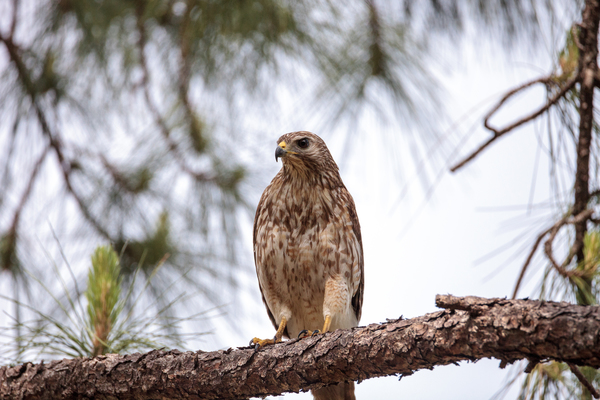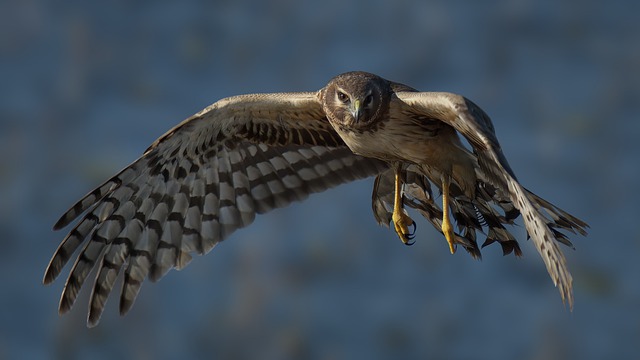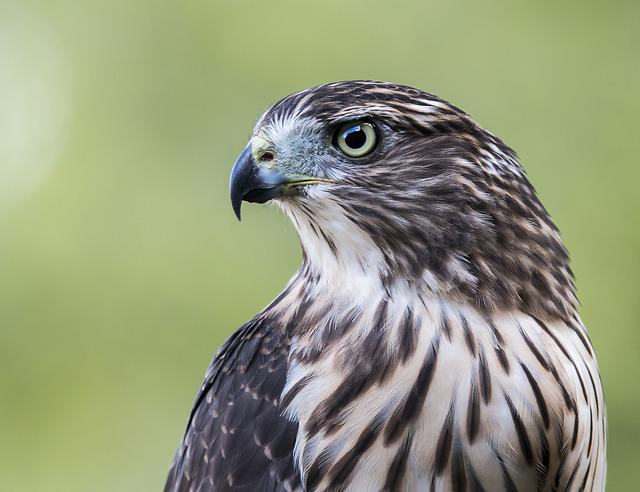The Empire State is well-known for many things, but its birdlife is not one of them. The majority of the best places for birdwatching are in the northern wooded areas and around the Great Lakes, although even New York City has a noteworthy roost.
The city’s parks and green spaces are home to a remarkable variety of species, despite the fact that they may not be thought of as a birding paradise. And if you’re expecting only pigeons and doves, reconsider.
In this piece, the different species of New York hawks will be examined. Hawks are daytime predatory birds of the Accipitridae family, which also includes buzzards, eagles, and kites.
Hawks are amazing hunters with keen vision and hearing. They are clever birds.
The majority of hawk species develop lifetime pair bonds and are fiercely territorial and monogamous in nature. Female raptors are often bigger and heavier than males.
Hawks perform complex aerial displays when courting. Hawk nestlings often referred to as eyes, are at least semi-altricial, which means that after hatching, they depend heavily on parental care.
In New York, hawks of at least eight different species may be found. The greatest season to see them is in the fall when they go south for the winter.
However, you can run upon a couple of hawks that are breeding even in the spring and summer.
| Image | Name |
|---|---|
 | Red-Tailed Hawk |
 | Red-Shouldered Hawk |
 | Northern Harrier |
 | Cooper’s Hawk |
 | Sharp-Shinned Hawk |
 | Broad-Winged Hawk |
 | Rough-Legged Hawk |
 | Northern Goshawk |
Different Species of Hawks in New York
1. Red-Tailed Hawk

The red-tailed hawk is the most numerous and ubiquitous hawk species on the continent and the most prevalent in New York because of its exceptional capacity to adapt to various habitat types.
Its rust-red top tail gave rise to its name. Apart from this distinctive characteristic, red-tailed hawks’ plumage varies greatly.
Habitat
The broad countryside, meadows, agricultural fields, and open woodlands make up their native environment. However, red-tailed hawks are known to venture outside of their natural range and are frequently spotted in populated areas.
Breeding couples can be observed nesting in high-rise structures like apartments and other high-rise buildings around the state.
Sticks and twigs are used to construct the nest, and strips of bark, pine needles, and other greenery are used to line it. Watch out for them perched on light poles, traffic signs, and fence posts at the side of the road.
A screeching keeaah sound is made while flying.
Food
Red-tailed hawks are adaptive when it comes to their environment, much as they are with their nutrition. These sky creatures mostly eat mammals and rodents, but they are opportunistic hunters that also eat reptiles, birds, and occasionally amphibians and invertebrates.
Red-tailed hawks are expert hunters who modify their approach and method according to the prey and environment. A healthy species with a rising population is the red-tailed hawk.
2. Red-Shouldered Hawk

When perched, the Red-shouldered hawk’s distinctive crimson shoulders are apparent, but the white markings on its back are more conspicuous.
Habitat
Natural habitats for red-shouldered hawks are deciduous swamps, low-lying hardwood woods, and woodlands.
Sadly, deforestation has a negative influence on a large portion of their habitat, which has negatively harmed the species. However, they are highly adaptive, and if they are evicted, they may move to forests close to cities and suburbs.
They may be seen across the state in the spring and summer because New York is their breeding area. During the winter, it’s possible to see resident birds in the northeast and migrating birds in the city’s southernmost area.
They may be found in heavily treed parks and woodland settings, frequently close to bodies of water. Watch for them circling over the nesting place and pay attention to their whistling sound.
Stick nests are constructed by red-shouldered hawks in the main forks of huge trees. They use leaves, shredded bark, and sprigs to line their nests.
3. Northern Harrier

Northern Harrier has an almost owl-like aspect to its face. The upper parts of male northern harriers are dark grey, whereas those of females are dark brown.
Habitat
Breeding in the northernmost regions of the continent, northern harriers go south for the winter. They like open environments like meadows, fields, prairies, and wetlands, where they may nest in dense undergrowth.
In the spring and summer, as well as during the rest of the year, particularly in the fall when they travel south for the winter, they may be seen in northern New York.
They may be seen best when in flight. Watch out for the low, coursing flying pattern and V-shaped wings. A sequence of kek notes makes up the call.
4. Cooper’s Hawk

This medium-sized hawk belongs to the Accipiter genus and was given the name William Cooper after the naturalist. Cooper’s hawks have blue-gray to greyish-brown upper parts to their plumage.
They have crimson bars and streaks on the cream-white underside. Their crowns are made of dark brown feathers, which, when fluffed, may give the heads a squarish look.
They may be seen in the southern part of the city when it’s not breeding season. Despite not being exceptionally talkative birds, the frequent call is a booming kek kek kek.
They construct massive platform nests up to fifty feet from the ground in the forks of big trees. They use sticks and twigs to construct their nests, lining them with strips of bark and other vegetation.
Prior to gathering up speed for its assault, it periodically darts from tree to tree as it surrounds its victim during a hunt. Small to medium-sized birds, small animals, and reptiles are all prey for Cooper’s hawks.
5. Sharp-Shinned Hawk

Sharp-shinned hawks can grow as little as nine inches in length, making them the smallest hawks in North America. Sharp-shinned hawks are so named because of their long, thin golden legs and large wings.
They have tawny thighs and barred white skin atop a blue-grey body. Their cheeks are rufous in hue, and their eyes are orange-red.
Habitat
This little raptor lives in woods and woodlands. Sharp-shinned hawks are mostly seen in the upstate wooded parts of New York throughout the fall and winter months. Watch for their distinctive glide and flap flying pattern. High-pitched kek kek kek is the call.
Small birds like sparrows, warblers, and tits are the main targets of sharp-shinned hawks. To capture their prey, they employ the element of surprise.
These little hawks are swift raptors skilled at negotiating deep thickets where they may remain hidden by vegetation while stalking their prey.
The species formerly experienced rapid losses as a result of chemical poisoning. However, since DDT was outlawed, populations are booming.
6. Broad-Winged Hawk

The broad-winged hawk is small to a medium-sized raptor that gets its name from its short, broad wings. Its wings feature a distinctive tapering shape that is not typical of hawks.
It has dark brown upperparts and white underparts with brown barring. The species comes in two color variants. The primarily brown dark morph has less white in its plumage than the lighter form.
Habitat
They lay their eggs in woods close to marshes, rivers, and open fields. During the fall, broad-winged hawk flocks may be seen performing migration rituals as they go south for the winter.
Search for them around water and in wooded regions. Keep an eye out for their sharp whistle-like cry.
7. Rough-Legged Hawk

Long, white tail feathers with black bands at the edge are a characteristic of rough-legged hawks. They resemble common buzzards, red-tailed hawks, and ferruginous hawks in appearance.
They favor open environments like fields, grasslands, and arid regions. Twigs, sedges, feathers, and other soft materials are used to construct the nests that rough-legged hawks build on the ledges of cliffs and rocky outcrops.
In the southernmost regions of the state, they are visible throughout the fall migration and in the early winter. Sadly, they are vulnerable to car accidents in the winter.
8. Northern Goshawk

The biggest member of the Accipiter genus and a unique, widespread raptor is the northern goshawk. It has stocky legs, long wings, a reasonably big beak, and a short tail.
Above, the color of its plumage ranges from blue-grey to brownish-grey. Its underparts range from light grey to white and include black stripes.
Habitat
Large areas of coniferous or deciduous woodland are home to northern goshawks. They are timid birds that fiercely protect their breeding area by making a quick ke ke ke warning cry.
If you’re lucky enough to see a northern goshawk, be careful not to approach it too closely because they have a history of attacking people when they feel threatened.
Check out this article on the Types of Hawks in Michigan.
Conclusion
Finding a hawk in New York is a pleasant surprise. They are astounding beings and among the smartest bird species. They have been employed in falconry for ages since they are simple to train.
Hawks have faced several conservation concerns throughout history. Their primary dangers have been habitat degradation, indiscriminate persecution, and inadvertent pesticide poisoning.
Fortunately, populations of the majority of species have recovered and are now stable, with some even flourishing, thanks to legislative preservation measures and the adoption of more responsible farming methods.
Communities and governing authorities are now responsible for ensuring the preservation of these rapidly disappearing natural ecosystems.
Last Updated on March 22, 2023 by Lily Aldrin
